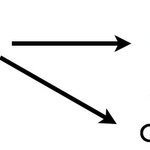Genetics & Molecular Biology

Your ability to listen to a phone message in one ear while a friend is talking into your other ear—and comprehend what both are saying—is an important communication skill that’s heavily influenced by your genes, say researchers of the National Institute on Deafness and Other Communication Disorders (NIDCD), one of the National Institutes of Health.
The finding may help researchers better understand a broad and complex group of disorders—called auditory processing disorders (APDs)—in which individuals with otherwise normal hearing ability have trouble making sense of the sounds around them.
“…

Scientists at the University of Bonn, together with colleagues from Romania, have discovered a gene variant that significantly increases the risk of developing gallstones.
It is estimated that one in ten Europeans has this variant in their hereditary disposition. For those affected, the likelihood of developing a gallstone in the course of their life is two to three times higher. The relevant gene contains the instructions for building a molecular pump which transports cholesterol from the liver into the bile ducts – cholesterol being the substance from which most gallstones are formed.…

Back in June, John Greally, a biologist at Albert Einstein, wrote a frustrating Nature commentary on the ENCODE project in which he repeatedly and wrongly suggested that before ENCODE, biologists were only paying attention to regulatory sequences:
"We usually think of the functional sequences in the genome solely in terms of genes, the sequences transcribed to messenger RNA to generate proteins."
"Now... the ENCODE Project Consortium shows... that the humble, unpretentious non-gene sequences have essential regulatory roles."
"...The researchers of the ENCODE consortium found that non-gene…

Johns Hopkins researchers have added to the growing mound of evidence that many of the genetic bits and pieces that drive evolutionary changes do not confer any advantages or disadvantages to humans or other animals.
“For a long time, the basic belief of evolution was that all random genetic changes that manage to stick around have some selective advantage,” says Nicholas Katsanis, Ph.D., Associate Professor at Hopkins’ Institute of Genetic Medicine. “But our work adds to the case that frequently, we are what we are largely due to random changes that are completely neutral.”
“I am not at all…

Vertebrate genomes are full of junk. Despite the occasional confusing magazine article, the spurious claims by creationists, or obfuscatory statements by some scientists, we know that our genomes are stuffed full of DNA sequence that serves no functional role for the organism. The vast bulk of this junk sequence consists of molecular parasites, called transposable elements, whose only 'function' is to replicate themselves. While our genomes obviously contain critical information required to build and maintain ourselves, they are also vast ecosystems of virus-like parasites that have…

Italian flies behave completely differently from English ones – and the difference lies in their genes, a new study from the University of Leicester has discovered.
The finding in the world renowned Department of Genetics at the University of Leicester has shed new light on the rhythm of life.
The Leicester team has published its findings in two back-to-back papers in the journal Science and further develops a decade-old Leicester discovery.
The Leicester research relates to two important aspects of life:
- The 24-hour body clock known as the circadian cycle
- The seasonal cycle (hibernation…

Artificially replicating the male genome could help men with very low sperm counts become fathers, a scientist told the 23rd annual conference of the European Society of Human Reproduction and Embryology (Tuesday 3 July). Professor Takumi Takeuchi, of Weill Medical College, Cornell University, New York, USA, said that mouse experiments by his team, led by Professor Gianpiero D. Palermo, had shown that offspring born as a result of such replication had shown a level of abnormalities consistent with that shown in cloned animals.
Where the man in a couple has problems making any significant…

How does a cell process information? Unlike computers, with CPUs to carry out calculations, and animals, which have brains that process sensory information, cells have no centralized device for processing the many internal and external signals with which they are constantly bombarded. And yet they somehow manage just fine. The single-celled brewers's yeast, for example, can know what kind of food source is available, tell when it's hot or cold, and even find a mate.
One key way that cells sense and respond to their environment is via genetic circuits.
Although biologists often use the…

Biologists at the University of California, Riverside have identified the genes, and determined the DNA sequences, for two key proteins in the "dragline silk" of the black widow spider - an advance that may lead to a variety of new materials for industrial, medical and military uses.
The black widow spider's dragline silk is a standout compared to other spider silks because of its superior strength and extensibility, a combination which enables black widow dragline silk to absorb enormous amounts of energy. These properties suggest that synthetically-produced silk might find applications as…

Size matters. At least, it does to an alpine ibex.
According to a team of international researchers, mature, male alpine ibex demonstrate a correlation between horn growth and genetic diversity. Past research studies have shown that greater genetic diversity correlates with a greater chance of survival.
"The size of the horns reliably advertises the genetic quality of the ibex—and the bigger, the better," said Dr. David Coltman, an evolutionary geneticist at the University of Alberta.
The researchers found that horn sizes among younger ibex (one- to six-years-old) are relatively similar…